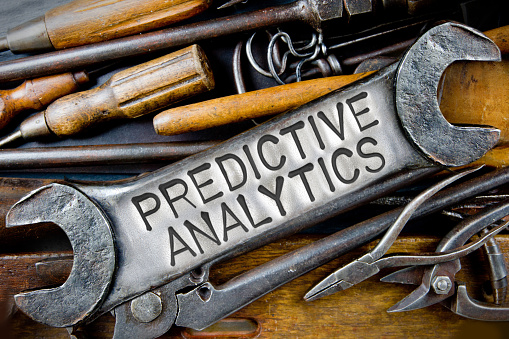Predictive analytics may not tell your future, but using it can increase your company’s fortunes.

Each time you buy something online, you’re providing more than just your name, address and credit card number. Websites collect a vast treasure trove of valuable information about you, even if you never make a purchase.
The information a company can collect ranges from the search terms you use, to how long you spent looking at specific pages. However, this is still just the “tip of a very large and hidden iceberg.”
When I ask business owners about who their target customers are, most are only capable of responding with a short sentence, “Our customers are married men between the ages of 40 and 60.” This isn’t nearly enough information to make appropriate business decisions.
Some have a much clearer idea of their target audience, and can provide a more complete customer persona based on general trends. However, as of yet, no client has ever presented me with an extremely detailed report of their market’s actual online behaviors.
This is no way to run a business. The more you know about your customers, the better you can predict their needs and cater to them. Collecting and analyzing big data is the best way for you to learn as much as you can about your customers and their behaviors.
What’s Big Data and Why Is It Such a Big Deal?
Perhaps you’ve heard the term “big data” before, but you may not know exactly what it means. To put it simply, it describes a collection of information that’s so large and cumbersome that it’s next to impossible to analyze without using a computer. However, there’s much more to big data than this basic definition.
Back in the early 2000s, industry analyst Doug Laney developed the concept behind big data. He defined it with the Three V’s: Volume, Velocity and Variety.
- Volume:Extremely large amounts of information.
- Velocity:Rapid flow of data.
- Variety:Data comes in many forms.
Companies around the world spend a lot of money on big data.
How Can Your Business Prosper from Big Data?
Although there’s a great deal of hidden potential in big data, it takes one more step to transfer information into knowledge. You can use this information to improve your business through the power of predictive analytics.
Predictive analytics deals with what’s likely to happen in the future using structured and unstructured big data.
- Structured data includes things that are easily definable and objective, like a customer’s age, race, gender, educational level and income.
- Unstructured data is information that must be parsed, and is subjective, such as customer reviews and social media.
Some areas where predictive analytics is most advantageous are with pricing strategies, inventory management and preventative maintenance.
- Pricing strategies that incorporate predictive analytics can help you increase your ROI (Return on Investment). Your business can earn more revenue when understanding the actions of your prospective customers. You can use big data and predictive analytics to discover what drives a specific segment of customers to make a purchase. For instance, an online retailer can store data about which pages a customer visited before making a purchase. With predictive analytics, you can then use big data to predict how much certain customer groups are willing to spend on your product.
- Inventory management is critical for businesses to master. Poor inventory management means a business is losing money by either not having enough stock to meet the level of demand, or by overbuying, which means products are sitting on their shelves. Traditionally, businesses stock products based on historical sales during a period of time. However, this approach doesn’t take into account changing preferences, nor does it provide data regarding new products. By using predictive analytics and big data together, businesses can get a better idea about demand for their products, and better plan for purchasing and stocking inventory.
- Predictive maintenance helps to keep a business operational by avoiding sudden breakdowns. If you’re concerned about unexpected machinery issues, you can combine predictive analytics and big data to make an educated guess about when a machine will require maintenance. Predictive maintenance can save businesses a lot of time and money. It’s critical for companies working in the transportation industry (such as airlines, trains and bus fleets.)
While most small businesses don’t have as much big data as large corporations, every business can still benefit by applying the principals of predictive analytics to build a better understanding of its market.
The experts at PNJ Technology Partners help. Contact us at (518) 459-6712 or via email info@pnjtechpartners.com to learn how we can help you use technology to analyze and predict your business needs.

